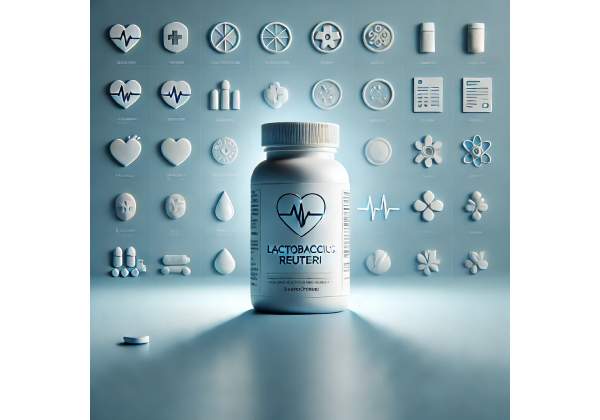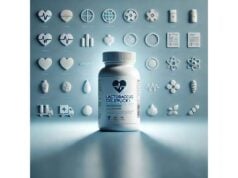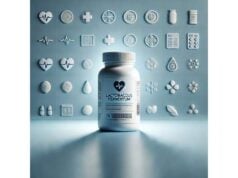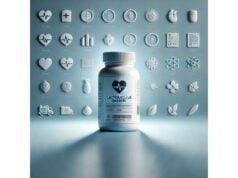
Lactobacillus reuteri (recently renamed Limosilactobacillus reuteri) is a well-studied probiotic species naturally found in the human gut, oral cavity, and breast milk. Certain strains—most notably DSM 17938, ATCC PTA 6475, ATCC PTA 5289, and RC-14—have been evaluated for digestive comfort, infant colic, antibiotic-associated diarrhea, oral health, and women’s urogenital support. Like other probiotics, its effects are strain-specific and dose-dependent, so outcomes hinge on the exact strain and the amount you take. In practice, supplementation centers on restoring a healthy microbial balance, producing antimicrobial compounds (such as reuterin), and modulating immune signaling. What sets L. reuteri apart is the breadth of human trials across age groups, from newborns to older adults. This guide translates that research into practical steps: when it makes sense to use L. reuteri, how much to take, how to select the right product, potential risks, and what the clinical evidence actually shows. You’ll find a careful, people-first summary that prioritizes clarity, safety, and real-world usability.
Key Insights
- DSM 17938 may reduce crying time in breastfed infants with colic and can support digestive comfort.
- Daily doses typically range from 1×108 to 1×1010 CFU; infant drops often provide ~1×108 CFU/day.
- Additive support with standard therapy may improve H. pylori eradication rates and reduce GI side effects during treatment.
- Mild gas or looser stools can occur; stop use and seek care with persistent or severe symptoms.
- Avoid if severely immunocompromised or with central venous catheters unless a clinician recommends and supervises use.
Table of Contents
- What is Lactobacillus reuteri?
- Does it work and key benefits?
- How to take and dosage
- Choosing strains and forms
- Side effects and who should avoid
- What the evidence says
What is Lactobacillus reuteri?
Lactobacillus reuteri is a lactic acid–producing bacterium historically isolated from healthy human hosts. Taxonomically, it now resides in the genus Limosilactobacillus, but most labels still use the familiar “Lactobacillus reuteri.” Unlike general “probiotic blends,” L. reuteri research is tied to named strains—short alphanumeric codes that identify specific lineages used in clinical trials. The most common are:
- DSM 17938: A child-friendly strain often used in infant drops for colic and general GI support.
- ATCC PTA 6475 (6475): Studied for musculoskeletal and inflammatory signaling in adults.
- ATCC PTA 5289 (5289): Used alongside DSM 17938 in lozenges for oral health and periodontal support.
- RC-14 (used with L. rhamnosus GR-1): Evaluated for women’s urogenital health.
Why strains matter: two products can both say “L. reuteri,” yet act differently if the strains differ. Mechanistically, L. reuteri can:
- Produce reuterin, a broad-spectrum antimicrobial that helps limit pathogen overgrowth.
- Generate lactic acid and lower local pH, making the environment less hospitable to certain harmful microbes.
- Interact with the immune system, nudging responses toward balance (e.g., reducing overactive inflammation).
- Influence gut–brain and gut–bone signaling in ways still being mapped, which is why you see it studied across varied outcomes.
Food sources include certain fermented dairy (like kefir or specific yogurts), but strain identity and dose are rarely guaranteed in foods. For targeted effects, most people use standardized supplements (drops, capsules, or lozenges) with labeled CFU and strain.
Where L. reuteri fits: it’s best viewed as adjunctive support—a tool to help restore balance, not a cure-all. Its strongest signals are in breastfed infant colic, adjunct to H. pylori therapy to improve comfort and possibly eradication rates, children’s antibiotic-associated diarrhea (AAD) prevention, and oral health when delivered by oral lozenge.
Does it work and key benefits?
Digestive comfort and infant colic (DSM 17938). Among the best-characterized benefits is reduced crying time in breastfed infants with colic. Effects tend to appear within 1–3 weeks at a dose around 1×108 CFU/day delivered as oil-based drops. Benefits are most consistent in exclusively breastfed infants; data in formula-fed infants are mixed. For parents, the practical signal is straightforward: if your pediatrician supports a trial, DSM 17938 drops for 2–4 weeks can be reasonable, especially if your infant is breastfed and otherwise healthy.
Antibiotic-associated diarrhea (children). During or after antibiotic courses, the gut ecosystem shifts and diarrhea can occur. L. reuteri DSM 17938 has been tested as preventive support during antibiotic therapy in pediatrics. Real-world takeaway: starting a pediatric-appropriate DSM 17938 product on the same day as antibiotics and continuing for 1–2 weeks after may lower AAD risk. Typical totals range from 1×108 to 1×1010 CFU/day, depending on formulation and age.
H. pylori therapy adjunct. Eradication regimens commonly cause GI side effects and can fail due to intolerance or resistance. Several randomized trials and recent meta-analyses suggest L. reuteri used alongside standard therapy may reduce GI side effects and modestly increase eradication rates. Pragmatically, the value is in comfort and adherence: fewer side effects mean finishing the course as prescribed.
Oral health (DSM 17938 + 5289). Lozenges that deliver L. reuteri directly to the mouth have been associated with improved gingival indices and shifts in oral microbial balance in clinical studies. This is a niche but practical use: short, repeated courses (e.g., lozenges twice daily for several weeks) can support periodontal care in addition to brushing, flossing, and professional cleanings.
Bone and musculoskeletal signaling (6475). Earlier, smaller work suggested potential benefits in older women with low bone mineral density. However, a larger, well-controlled recent trial in early postmenopausal women did not reduce bone loss over two years. For now, bone support should not be a primary reason to choose L. reuteri.
Immune balance and general GI well-being. Many users report milder gas, less bloating, or smoother BMs after a few weeks. These are plausible but nonspecific outcomes seen with several probiotics. If you’re aiming broadly at gut comfort, choose a strain with targeted evidence for your goal (e.g., DSM 17938 for colic, DSM 17938 or blends for AAD prevention).
Bottom line benefits:
- Strongest, most practical signal: infant colic (breastfed; DSM 17938) and adjunct to H. pylori care.
- Good pragmatic use-case: pediatric AAD prevention during antibiotics.
- Supportive niche: periodontal/oral health with lozenges (DSM 17938 + 5289).
- Currently not supported: 6475 for preventing early postmenopausal bone loss in otherwise healthy women.
How to take and dosage
Match the strain to the goal. Probiotics are not interchangeable. Verify the strain code on your bottle:
- Infant colic: DSM 17938 oil drops.
- AAD prevention (children): DSM 17938 (drops or powder in age-appropriate dose).
- H. pylori adjunct: DSM 17938 or products labeled specifically for use during eradication therapy; coordinate with your clinician.
- Oral health: lozenges combining DSM 17938 + ATCC PTA 5289.
Typical daily amounts:
- Infants (colic): ~1×108 CFU once daily (often 5 drops) for 2–4 weeks; reassess benefit at two weeks.
- Children (AAD prevention): 1×108–1×1010 CFU/day during the antibiotic course and for 7–14 days afterward.
- Adults (H. pylori adjunct): 1×109–1×1010 CFU/day, started 3–7 days before therapy (if feasible), continued through antibiotics, and 1–2 weeks afterward.
- Oral lozenges: typically 1 lozenge twice daily for 4–12 weeks, dissolved slowly after brushing; do not chew.
Timing and co-administration:
- With food: Taking probiotics with meals or shortly after can improve survival through stomach acid.
- Antibiotics: Separate by at least 2–3 hours to reduce antibiotic kill of the probiotic.
- PPIs (e.g., during H. pylori care): Often taken together; follow your clinician’s schedule.
Storage and handling:
- Check the label for refrigeration needs; some L. reuteri products are shelf-stable.
- Look for “CFU at end of shelf life” rather than “at manufacture.”
- Avoid high heat and moisture; keep the cap tightly closed.
When to expect changes:
- Infant colic: Reassess at 7–14 days; continue up to 4 weeks if improving.
- AAD prevention: The goal is fewer or milder diarrhea episodes during/after antibiotics, not necessarily zero symptoms.
- H. pylori adjunct: Expect tolerability benefits during therapy; eradication outcomes are assessed by your clinician after completion.
Practical combinations:
- For general GI support, L. reuteri can be combined with prebiotic fibers (e.g., inulin) and a diverse diet rich in plants, unless otherwise advised.
- In oral health, combine lozenges with brushing, flossing, and professional cleanings; they’re not replacements.
Choosing strains and forms
Read the label beyond the species. The most common purchasing mistake is buying any product labeled “Lactobacillus reuteri” and assuming it will deliver the outcome from a specific trial. Instead:
- Confirm the strain code (DSM 17938, ATCC PTA 6475, ATCC PTA 5289, or RC-14).
- Confirm the CFU per serving and servings per day to reach a daily total aligned with your goal.
- Check delivery form: drops for infants; capsules or powders for adults; lozenges for oral health.
Quality markers to look for:
- CFU guaranteed at end of shelf life and stable through the expiration date.
- Third-party testing seals when available (for identity, purity, CFU count).
- Clear storage instructions (refrigerate vs shelf-stable).
- Transparent excipients (avoid unnecessary sugars or allergens if relevant).
Evidence-aligned picks:
- Infant colic: DSM 17938 drops from reputable pediatric lines.
- Children on antibiotics: DSM 17938 alone or in a child-formulated blend that includes DSM 17938 at meaningful CFU.
- H. pylori support: Products that explicitly list DSM 17938 or specify use during eradication therapy; discuss with a clinician to avoid interactions and ensure correct timing.
- Gingival/periodontal support: Lozenges combining DSM 17938 and ATCC PTA 5289.
What about multi-strain blends? Some blends include L. reuteri with other lactobacilli and bifidobacteria. Blends can be useful, but don’t assume they equal DSM 17938-alone trial results. If you’re aiming at a trial-backed outcome (e.g., colic), prioritize the exact strain and trial-matched dose/duration. You can layer a broader blend later for general diversity if needed.
Budget and value tips:
- Calculate cost per effective daily dose, not per capsule.
- Short, targeted courses (e.g., 2–4 weeks for colic; the duration of antibiotic therapy for AAD prevention) often provide better value than indefinite use.
Red flags:
- Vague labels with no strain codes.
- Mega-CFU claims without stability data.
- Products promising to cure diseases—credible probiotics avoid exaggerated claims.
Side effects and who should avoid
Common, generally mild effects: temporary gas, bloating, or looser stools in the first few days as your microbiome adapts. These usually settle as you continue. Starting with food and adequate hydration can help.
When to stop and seek help:
- Worsening abdominal pain, persistent diarrhea, fever, or signs of dehydration.
- Any rash, hives, or breathing difficulty after dosing (rare; consider excipient sensitivity).
- Infants with bilious vomiting, blood in stool, failure to thrive, or fever should be evaluated urgently—do not attribute serious symptoms to “adjustment.”
High-risk groups (use only with medical supervision):
- Severely immunocompromised individuals (e.g., neutropenia, post-transplant) due to rare risk of bacteremia.
- Those with central venous catheters or structural heart disease where even commensal bacteria can pose risks.
- Critically ill or postoperative patients unless prescribed in a clinical protocol.
- Premature infants: NICU protocols vary; clinicians may use specific strains under strict oversight.
Pregnancy and breastfeeding: L. reuteri is commonly studied in perinatal settings and generally considered safe when products are reputable and used as directed. As always, discuss supplements with your obstetric provider, especially if you have complications.
Medication interactions: No direct pharmacological interactions are typical. The key is timing relative to antibiotics (separate by 2–3 hours) and following eradication therapy schedules precisely if using as an adjunct for H. pylori.
Allergens and excipients: Drops and lozenges can contain oils, sweeteners, or milk-derived excipients. Check labels if you have dairy, soy, tree nut, or gluten concerns.
How long can you take it? For targeted outcomes, use for the trial-like window (e.g., 2–4 weeks for colic; duration of antibiotics for AAD). For oral health, programs often run 4–12 weeks, sometimes in cycles. For general GI comfort, reassess every 8–12 weeks; if no clear benefit, discontinue.
What the evidence says
Infant colic (DSM 17938). Multiple randomized trials pooled in formal meta-analyses show reduced crying/fussing time and increased “treatment success” in breastfed infants after about 3 weeks. Effects in exclusively formula-fed infants remain uncertain. The clinical nuance: colic tends to improve naturally over time; using DSM 17938 may accelerate relief in breastfed infants, helping families through the most difficult weeks.
Antibiotic-associated diarrhea (children). Pediatric RCTs indicate L. reuteri DSM 17938 can lower AAD incidence when started with antibiotics and continued briefly after. Age appears to matter: toddlers and younger children may experience clearer benefits, especially in high-risk contexts such as acute otitis media requiring antibiotics. While absolute risk reduction varies, the approach is safe and pragmatic when parents want to be proactive.
H. pylori eradication adjunct. Several RCTs and new meta-analyses report that adding L. reuteri modestly improves eradication rates and reduces overall side effects of therapy (e.g., dyspepsia, diarrhea), largely by improving tolerance and adherence. It’s not a replacement for antibiotics—rather, a supportive measure that can make completing therapy easier. Protocols typically use ~1×109–1×1010 CFU/day during treatment and short “lead-in” and “tail” periods.
Oral health (DSM 17938 + 5289). Randomized studies using lozenges show improvements in gingival indices and shifts in oral microbiota toward a healthier profile. Benefits depend on consistent use and correct delivery (slow lozenge dissolution so bacteria can colonize oral surfaces). As with all periodontal care, lozenges are adjuncts to mechanical plaque control and professional therapy.
Bone health (6475). Early positive signals in older women with low BMD prompted interest in 6475, but a large two-year RCT in early postmenopausal women showed no effect on bone loss or turnover. This underscores a core probiotic principle: promising early data must be confirmed in larger, well-controlled trials before changing practice.
Safety across trials. Across pediatric and adult RCTs, L. reuteri is well-tolerated with side effects comparable to placebo. Serious adverse events attributable to the probiotic are extremely rare and typically involve high-risk, hospitalized, or profoundly immunocompromised patients. For community use in healthy individuals and under pediatric/obstetric guidance, the risk profile is favorable.
What this means for you:
- If you’re a parent of a breastfed infant with colic, DSM 17938 is a reasonable, evidence-aligned 2–4 week trial.
- If your child starts antibiotics, adding DSM 17938 the same day may reduce AAD.
- If you’re undergoing H. pylori therapy, discuss with your clinician whether adding L. reuteri could improve comfort and adherence.
- If you’re targeting bone health, current high-quality evidence does not support 6475 for preventing early postmenopausal bone loss.
- For oral health, consider lozenges (DSM 17938 + 5289) alongside standard dental care.
References
- Lactobacillus reuteri to Treat Infant Colic: A Meta-analysis 2018 (Meta-analysis)
- Probiotics for infantile colic: Is there evidence beyond doubt? A meta-analysis and systematic review 2024 (Systematic Review)
- Effect of Limosilactobacillus reuteri DSM17938 to prevent antibiotic-associated diarrhea in children: prospective, multi-center, randomized, placebo-controlled clinical trial (PEARL Study) 2025 (RCT)
- Limosilactobacillus reuteri 6475 and Prevention of Early Postmenopausal Bone Loss: A Randomized Clinical Trial 2024 (RCT)
- Lactobacillus reuteri compared with placebo as an adjuvant in Helicobacter pylori eradication therapy: a meta-analysis of randomized controlled trials 2024 (Meta-analysis)
Disclaimer
This article is for educational purposes only and does not replace personalized medical advice, diagnosis, or treatment. Always consult a qualified healthcare professional before starting, changing, or stopping any supplement—especially for infants, during pregnancy, while breastfeeding, when managing chronic conditions, or when taking prescription medicines.
If you found this guide helpful, please consider sharing it with friends or colleagues on Facebook, X (formerly Twitter), or your preferred platforms, and follow us for future updates. Your support helps us continue producing evidence-based, people-first content.










